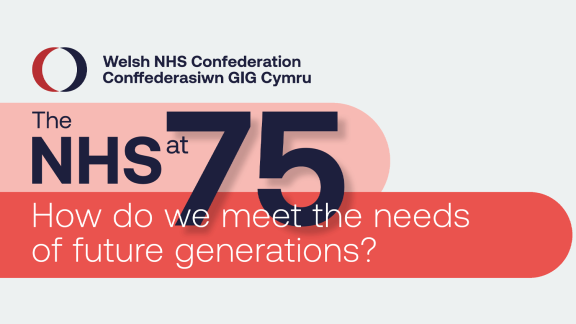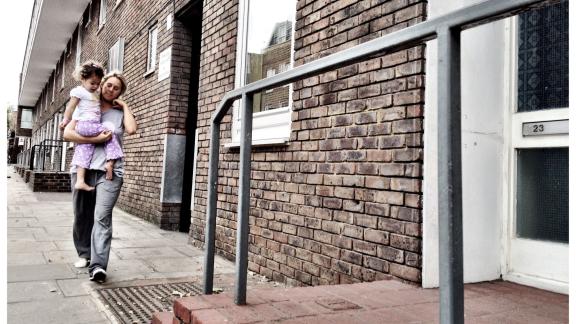Response to the Welsh Government’s consultation on the Draft Child Poverty Strategy for Wales 2023

Introduction
The Welsh NHS Confederation (WNHSC) welcomes the opportunity to respond to the Welsh Government’s consultation on the Draft Child Poverty Strategy
The WNHSC represents the seven Local Health Boards, three NHS Trusts (Velindre University NHS Trust, Welsh Ambulance Services NHS Trust and Public Health Wales NHS Trust), and two Special Health Authorities (Digital Health and Care Wales and Health Education and Improvement Wales). The twelve organisations make up our Members. We also host NHS Wales Employers.
Our members welcome the aims of the Draft Child Poverty Strategy and the support it would provide in tackling a key issue which contributes to poor health. In particular, some members were pleased to see the focus on poverty-related stigma under objective four, which impacts detrimentally on the take up of support.
However, there were concerns expressed and this response aims to provide a general overview of these issues.
Poverty and Health
Members were disappointed with the lack of focus on health inequalities within the strategy. The document represents an opportunity to address this long-term challenge and create a healthier future for children, which will have positive impacts into adulthood.
The Child Poverty Strategy needs to focus attention and resource on reducing health inequalities to avoid the subsequent long-term issues which result from such inequity. These will ultimately have a negative impact on public services and in other areas of children’s lives. For example, an issue such as hygiene poverty will affect a child’s health but also their educational attainment and attendance. Therefore, it will be crucial for initiatives, such as Designed to Smile, to be considered and promoted as part of the strategy.
The NHS itself is a key partner in effectively tackling poverty but members highlighted several issues which could inhibit this role. This includes digital exclusion which is having an impact on how families access NHS services. Professionals who work with members of the public and wider communities are reporting challenges with the role out of virtual appointments. These include accessing virtual appointments in public places that are not private such as libraries, supermarkets and on public transport.
Members also indicated that community and place-based working could be helpful in tackling the stigma associated with poverty, as people often feel more comfortable accessing local venues. Co-location of services in community hubs may also mean that professionals such as GPs will find it easier to signpost or refer patients to non-medical support.
Cost of Living and Covid-19
Members felt that the Strategy was insufficiently contextualised within the cost-of-living crisis and Covid-19 pandemic. This context is crucial as these crisis’ will have wide-ranging and long-term implications for children.
The Welsh NHS Confederation’s Health and Wellbeing Alliance briefing “Mind the gap: what's stopping change?” stated that the COVID-19 pandemic has widened existing inequalities and subsequently highlighted the link between poverty and poor health outcomes. The document highlighted the role that a range of public sector bodies, and other sectors, play to tackle inequalities and called for a cross-government plan to reduce inequalities and tackle the cost-of-living-crisis.
A recent Public Health Wales review of the literature into the impact of the cost-of-living crisis on children shows that:
- Children are one of the population groups whose health and well-being are most affected by the cost-of-living crisis, in direct and indirect ways.
- Direct impacts of the cost-of-living crisis on children’s health include a higher risk of asthma and other health conditions as a result of living in a cold home, and a greater risk of obesity as a result of missing out on nutritious food.
- Indirect impacts include being at higher risk of exposure to adverse childhood experiences, such as abuse, increased risk of chronic illnesses in adulthood and poorer employment prospects due to lower educational attainment.
These impacts will be felt more acutely in certain groups of children who were already at higher risk of living in relative income poverty. If not explicitly addressed through such levers as the Child Poverty Strategy, then cost-of-living and Covid will continue to have a devasting impact on children and young people.
Cross-Government Action and Strategic Leadership
Child poverty is a complex issue which requires strong national-level coordination and vision, with some of our members suggesting further detail is required in the Strategy to better understand how its aims will be achieved, who is responsible for delivery of different objectives and the expectations of public bodies in regard to local and regional collaboration. There is also a need to expand on the Welsh Government’s strategic role and how it will link this Strategy in with other areas of work, such as the cost-of-living response and efforts to implement the Well-being of Future Generations Act and Socio-Economic Duty.
Therefore, an integrated and cross-government approach is needed to achieve a national strategic direction which effectively tackles child poverty, with actions required across health, education, transport and income maximisation. The call for a cross-government plan to address inequality and poverty was central to open letter to all government departments from the Welsh NHS Confederation’s Health and Wellbeing Alliance, in partnership with the Royal College of Physicians.
Members also suggested that the Strategy lacks a focus on the long-term implications of decision-making, and the importance of ensuring prevention is considered when exploring initiatives intended to alleviate poverty. Interventions alone may not suffice without the necessary strategic vision to reduce the impacts of poverty in the long-term. For example, whilst initiatives such as free school meals will alleviate the immediate issue of hunger, these foods must be nutritious to avoid long-term health implications.
Early Years
Members welcomed the engagement that the Strategy sought to have with those with lived experience of poverty, particularly those with protected characteristics. However, little consideration appears to be given to the impact on babies, for whom poverty in their first 1001 days could significantly affect their development.
A child’s experiences and interactions with the environment are predominantly provided and mediated by their parents during the first 1001 days, with poverty affecting parents through different routes. This includes the inability purchase goods to support a child’s development to the additional stress that poverty places on a family.
Due to the crucial nature of these early days, it is essential that attempts to minimise inequalities and reduce poverty must begin as early as possible and include parental support. This should extend into pregnancy, with one of our member’s highlighting the importance of promoting and monitoring the Sure Start Maternity Grant.
Childcare is also another area that requires further consideration, with one of our members highlighting staff shortages in the early years sector (amongst health visitors, speech and language therapists, early years workers and childminders). Providing a high-quality service in areas of deprivation allows low-income children to benefit from early years education and increases school readiness.
The NHS also has a key role to play in reducing the impacts of child poverty on families, particularly in the early years. Health visiting and midwifery services, as the universal support services in the first 1001 days, are uniquely placed to systematically assess families’ needs and facilitate early access to a broad range of support.
Members also highlighted that the Strategy does not include a mention of adverse childhood experiences (ACEs), with children living in social deprivation more likely to experience multiple ACEs which can negatively impact on their health and social outcomes. While priority four includes reference to trauma-informed practice, a Child Poverty Strategy should also focus on trying to prevent ACEs from occurring in the first place.
Conclusion
Whilst members generally welcomed this drive to tackle child poverty and the subsequent harms that are associated, there is still a need to further consider a number of issues.
A greater emphasis needs to be placed on the Welsh Government’s role and how it will work to ensure an interconnected response to a complex issue. The Strategy covers a number of different areas and priorities, many of which are interlinked such as fair work and access to childcare. As such, the Welsh Government needs to assume a central role to ensure the aims of Strategy are delivered, with decision-making being informed through a prevention-based lens.
Members are aware of the increasingly difficult financial situation facing the Welsh Government and public sector organisations in Wales. Therefore, existing schemes and interventions should be evaluated to determine their effectiveness, the outcomes that they have achieved and improve on approaches.
There is also a need to empower individuals to become active and personally invested in their own health and wellbeing. Therefore, the public should be drawn into a national conversation which considers the overall future of health and care services and people’s health and wellbeing, which we outlined in our briefing ‘The NHS at 75: How do we meet the needs of future generations’ .This engagement becomes crucial when considering children and how services can best be shaped to help prevent the long-term implications associated with living in poverty.



